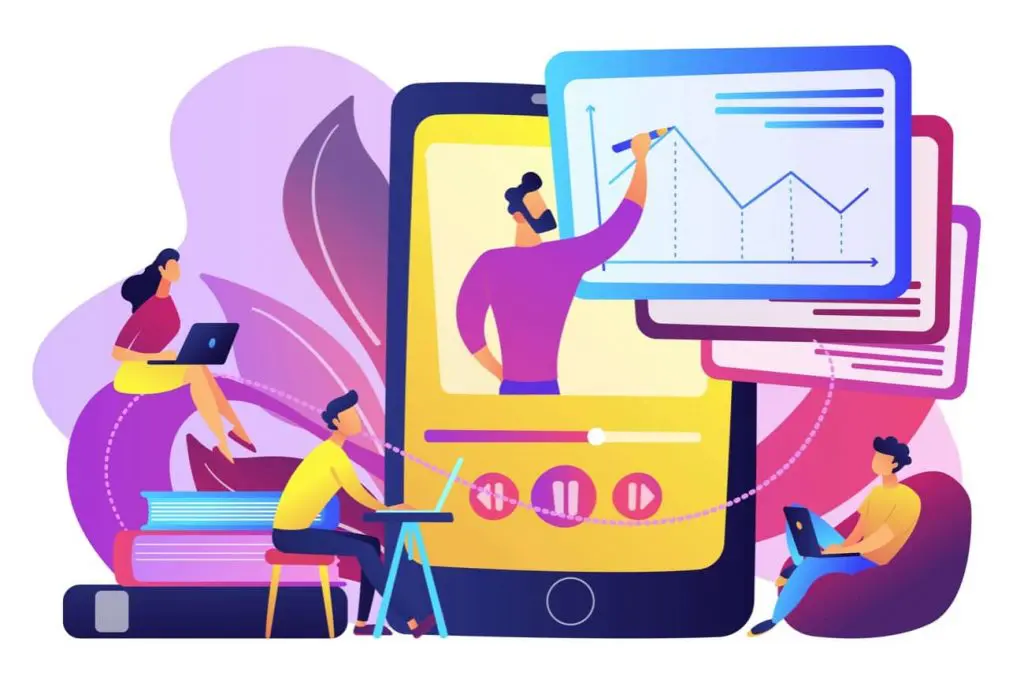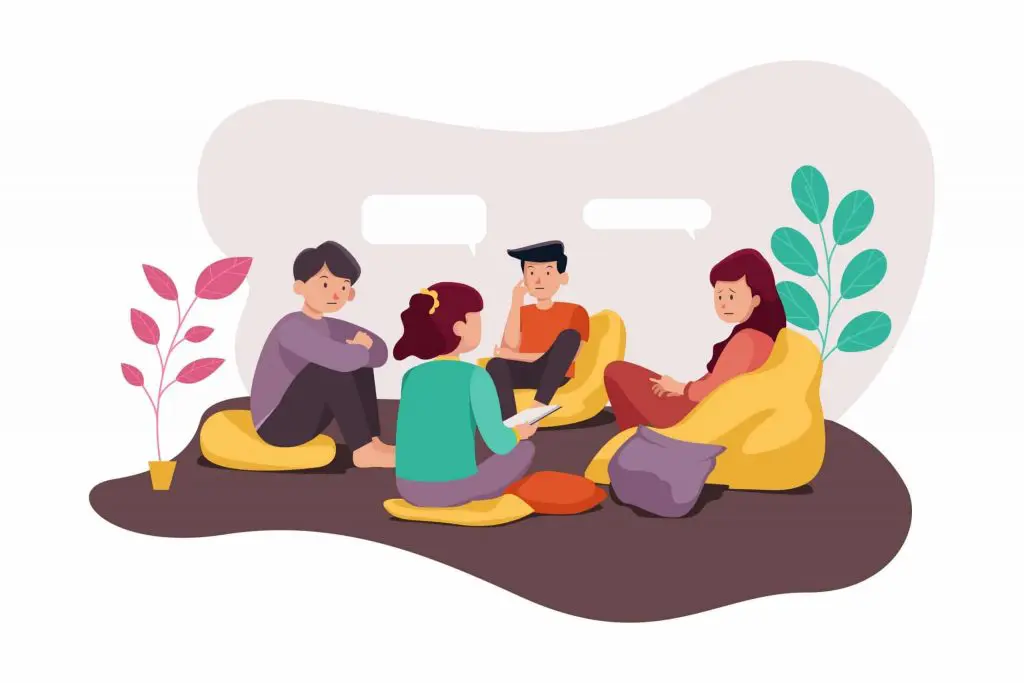Online teaching sites : Create best selling courses- part 2

Table of Contents
In this series of posts, we will see how to start online teaching sites
The 6 Keys to an Engaging Online Course

For your online course to meet the needs of your students, it needs to be engaging. People don’t learn new information when they’re passive. Your students must be actively involved and take their education into their own hands in order to see results.
Here are the keys to keeping students engaged when teaching an online course.
Keep Sessions Short
Lessons should be long enough to cover the topic satisfactorily but not so long that they wear out your students. As a general rule, sessions should be around 45 minutes to an hour and should include various elements to keep the pace moving. Work with your participants’ attention spans and adjust as needed.
Identify a Clear Goal
Each session should have one clear goal. Depending on the structure of the course and time requirements, you may cover additional material, but it should be clear from the beginning what students will take away from every session.
For the best results, make the goal not something they will learn about but something they will be able to do when the session is over. Give them actionable steps to take using what they’ve learned in the course that will make some positive change in their lives.
Plan Plenty of Activities
What makes an online course truly engaging are the activities planned throughout the sessions where participants are given tasks to complete using what they’re learning. A good structure is to present the information first, then give students a task to complete based on what they learned. Then, follow up and check progress or answer questions so they can improve next time.
- Give students activities that practically apply what they’re learning. For example, if you’re teaching a course on blogging, have your students create their blog right there during the session.
- Break students off into groups of 3-4 for discussions. Give each group a task to complete such as solving a problem, ranking a list, or brainstorming ideas.
- Depending on the subject matter, you could offer quizzes or worksheets to check understanding.
- Have your students do a “show and tell” where they prepare something to present during the next session.
Let the subject matter you’re teaching guide you in planning activities, but make sure your sessions include plenty for your students to do.
Seek Feedback
Create opportunities for your students to give you feedback throughout the course. During your sessions, take comments and questions and use active listening to summarize the main points. Survey your students before, during, and after the course to make sure it’s helping them. This feedback will give you valuable data on whether the course is achieving its goals and give participants the feeling that the course belongs to them.
Choose an Engaging Format and Materials
Choose the right format and materials that will make the course the most engaging. Use a mix of media elements that includes visuals and videos as well as text. Create PowerPoint presentations to present data that make it easier to understand and digest. Creating variation in your online course will help keep students engaged with the material.
Keep It Fun
The purpose of the course is to learn and meet learning objectives, but it should also be fun and exciting for students to be a part of. Be enthusiastic and let your passion for your topic come through during your lessons. Try to make each element of the course fun so that it’s a place people want to be.
How to Use Active Listening When Teaching an Online Course

When you’re teaching an online course, how do you make sure your students are learning? How do you ensure that your course is an active and engaging learning environment? An essential skill for your teaching toolbox is active listening.
What Is Active Listening?
Active listening is a technique developed for deep understanding. It’s not just hearing or listening passively but taking in what you hear and truly absorbing it. This technique should be used by both students in learning course material and by teachers in checking for students’ understanding.
The Basic Process of Active Listening
The basic process is to listen to what the speaker is saying, and then summarize the main points back to them in your own words to make sure that you understood them completely. It demonstrates that you understand and, if you don’t, clarifies the main points of the speaker so that you do.
Active Listening in the Online Learning Environment
In an in-person classroom environment, we have non-verbal clues such as eye contact, nodding, and open body language to show the speaker that we understand what they’re saying. One of the challenges of teaching and learning online is that we don’t have these cues available to us. This is why active listening is critically important in the online learning environment.
It’s also important because it’s harder to build a trusting relationship in an online environment, and this kind of relationship is essential for teaching. Active listening helps to build this close bond between teacher and student.
How You Can Use Active Listening Online
Active listening facilitates the two-way communication necessary for online learning. Both teacher and student should use it.
As the teacher, you can use active listening when requesting feedback from your students. When you ask for comments or feedback from your student, repeat back to them the main points of what they said to make sure you fully understood. This shows that you were listening and understand what they’re saying.
You can also use this skill to check for students’ understanding. Ask them to summarize what they learned and fill in any details they seem to have missed. It can also be useful for peer-to-peer communication during activities or discussions.
Tips on Active Listening
- Active listening requires your full attention. No matter how much you’re tempted to, don’t multi-task during online courses and especially when a student is speaking.
- Don’t add judgments or opinions when repeating back what someone said. Simply paraphrase the most important points. You can save discussion and opinions for later after you’ve clarified your understanding.
- Don’t interrupt when someone is speaking. Let them finish fully before you clarify their main points.
- You can still use non-verbal communication in an online environment. If you’re running a live training session over video, your students can see you, so nod, maintain an open posture, and make appropriate interjections to show you’re listening.
It takes some effort to master active listening at first, but soon it will become second nature, and this is a skill you can use in any area of your business or personal life.
3 Deadly Mistakes to Avoid When Creating Your First Online Course

Online courses are extremely popular today. Any business can create and run an online course to extend their reach, build their audience, share their expertise with the world, and turn a nice profit.
Here are three deadly mistakes that businesses often make when they create their first course.
Creating the Course YOU Want
(Not the Course Your Audience Needs)
You may have a great deal of knowledge in a particular area that you can teach others. You might think you know exactly what kind of course your audience would like. But it’s a fatal mistake to create the course you want rather than the course your audience needs.
You may be able to create an excellent course based on what you think you should teach, but it’s not likely to reach a great number of people or earn you a profit. And then, what’s the point? You’ll have a highly informative course that no one signs up for.
Instead, you should start by considering your target audience. What problems are they struggling with? What do they need to know? What are their interests? Once you have some ideas, consider how you can help them. Try to match your audience’s needs to your skills and expertise.
For example, you may find out through surveys that your email subscribers want to know more about using LinkedIn. You can take your knowledge and experience with LinkedIn and create a course that teaches them how to set up a profile and use it.
Making Your Course Too Long
Naturally, you have a great deal of knowledge you want to drop on your course participants. It also makes perfect sense that a longer course is more bang for the buck. A long and thorough course offers more value to its participants.
The problem is that if your course is too long, it might overwhelm your students. You might lose some of them along the way. The best courses are tightly focused. They teach what they need to teach in order for students to overcome the problems they’re struggling with. Your course should be just long enough to do that.
The ideal length for an online course is five to seven modules. Each module should have three to five steps or small sections. Each course has its own needs structurally, though, so this is just a guideline.
If you find that your course is longer than three to five modules, try breaking it down into two courses. If there is a sequential relationship, you can make parts one and two. If the course is slightly too long and you feel the information is very valuable, you can remove one module and offer it as supplemental material, a bonus add-on, or an additional resource for participants.
Putting All of Your Effort on the Course but Skimping on the Marketing
It takes a great deal of work to put together and run an online course, but you can’t forget to market it. Before you even get started, make sure that you have a solid marketing plan. How will you get your course in front of your target audience? How will you advertise it and put the word out? Which marketing channels will you use and how will you use them?
If you have a topic that aligns with your target audience’s interests, a tightly focused course, and a marketing plan in place, you’re virtually guaranteed a successful course.
Boost Your Online Course’s Value with Bonus Material
If your online course offers high value to your target audience, you’re assured that the course will be a success. One way to add more to your course is to add supplemental bonus material.
Add More without Going Too Long
The ideal length for an online course is five to seven modules. If you make it much bigger than that, you’re going to overwhelm your participants and your course may lose focus. It needs to be just long enough to tackle one learning task completely. Adding bonus material allows you to add to the course without extending it. The bonus material is a supplement.
For example, you might find that you have too many modules. You can then look at your modules and pick one that’s a bit of an odd man out. Remove this module and offer it as a “bonus report.”
A Little Off-Topic
Bonus material allows you to add more something to the course that’s not strictly on-topic. Good courses proceed in a logical order and help a student learn how to do one specific task. Your bonus material can offer something extra that’s related, but not related enough to be part of the course.
For example, you might offer a course on setting up and managing a successful blog. The modules start with the technical aspects of setting up the blog, and then cover how to come up with ideas for content and write, and finally some tips on driving traffic to your blog. If adding an audio version of your blog posts is a technique you’ve used to great success in the past, you might offer an additional report on creating audio posts.
An Extra Bonus!
Bonus content adds value to your course. It has a powerful psychological effect. If you have a course with seven modules versus a course with six modules and a bonus report, the latter will be perceived as having more value. The idea that it’s an extra bonus makes the buyer feel like they’re getting something extra, even if the volume of information is actually the same.
Differentiate Yourself
Finally, adding extra bonus material is a good way to set your course apart from other similar courses. It gives you just a bit extra over the competition and can be a unique selling point for your course.
If you want to add bonus material, anything that provides valuable information or helps the buyer will work. The material can be:
- Workbooks or worksheets to go along with the course
- Checklists for tasks from the course
- An eBook or report on a related topic
- A quick-start guide that helps the student apply what they’ve learned in the course
- Resource guides with online resources related to the course content
- Access to a private online community (students can discuss the course content and share ideas)
- Live Q&As
- On-on-one coaching
- Expert interviews with people in your niche
- Graphics to help with the information from the course
- Templates for tasks from the course
It takes some work to create additional content, but it can be a great bonus for your course participants. It doesn’t have to be anything involved, but just something valuable.
Please read other blogs on how to start online classes
Read the previous post
Consider taking course The Digi Guru Plus on how to teach online






Responses